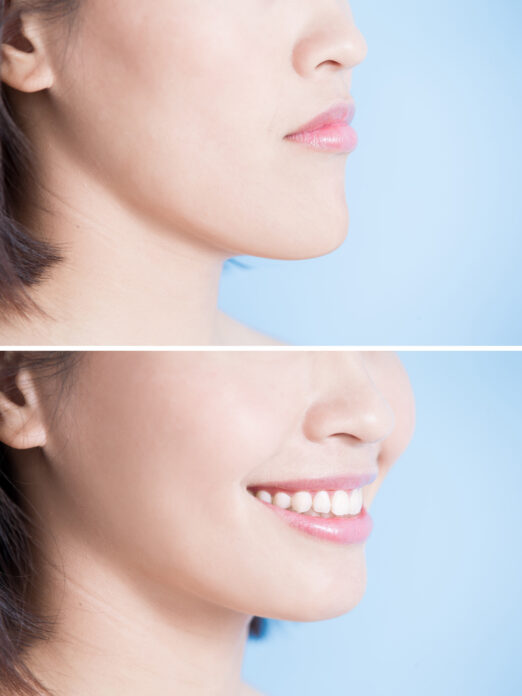Corrective jaw surgery, also known as Orthognathic Surgery, involves procedures that realign disproportioned jaw bones to enable the best possible bite for mastication, speech and to balance the facial profile. Developmental problems include overgrowth, undergrowth and asymmetry of the jaws and facial skeleton.
Who is it for?
Individuals with jaw and facial disproportion may seek corrective surgery from an OMS, with indications for treatment including facial asymmetry, jaw and tooth misalignment, difficulties with chewing, and/or speech. Orthognathic surgery is also used in managing congenital craniofacial syndromes, such as cleft lip and palate. It is also one of the treatments for obstructive sleep apnoea (OSA), particularly with certain facial pattern types.
Treatment
Orthognathic surgery is generally conducted in conjunction with orthodontic treatment (braces) to optimally correct the bite and to provide good facial balance. Treatment is often undertaken in the teenage years and early adult life when facial growth is complete or nearing completion. However, corrective jaw surgery can be offered to adults of all ages.

Underbite 
Overbite
Corrective jaw surgery is generally safe and accurately performed when done by OMS surgeons who have the necessary medical, dental and surgical training enabling close collaboration with orthodontists.
The Procedure
The surgery is performed under a general anaesthetic, almost always through the mouth, and only rarely are incisions made on the face. Precision bone cuts (osteotomies) enable repositioning of the jaw fragments that are held in position with bone screws and plates.
While most patients seek orthodontic treatment in combination with orthognathic surgery to straighten their teeth and to correct a bad bite, the treatment often has major positive changes in a person’s facial appearance.
Corrective jaw surgery is a routine, safe procedure when done by an experienced OMS surgeon, with some of the more complicated procedures being conducted in collaboration with an orthodontist.
Early after surgery, patients may experience:
- Pain, swelling and fatigue.
- Limited mouth opening requiring a soft diet.
- Adjustment to a new appearance in some cases.

Locate an OMS in your area
Ready for the next step? Find an ANZAOMS member in your area within Australia and New Zealand today.

Is oral and maxillofacial surgery right for you?
We’ve put together a handy list of questions for you to discuss with your surgeon.
Find out more information on other procedures
Note: The information covered within this web page and across this website is not intended as a substitute for professional medical or dental advice, diagnosis, or treatment. It is listed to provide you with a general overview to help you communicate effectively when you seek the advice of an oral and maxillofacial surgeon.

